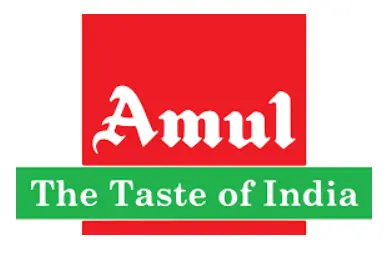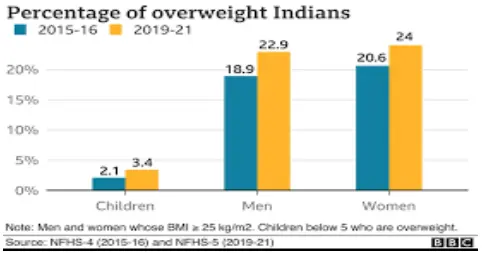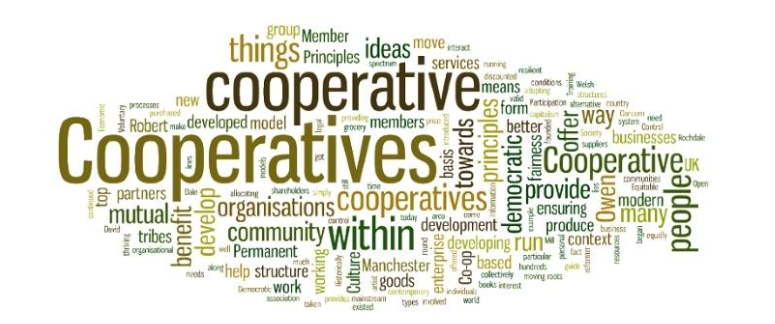Saturday, 9th March 2024
India AI Mission
In News: The Union Cabinet has given its approval for the IndiaAI Mission, allocating a budget of Rs 10,372 crore for the upcoming five years.
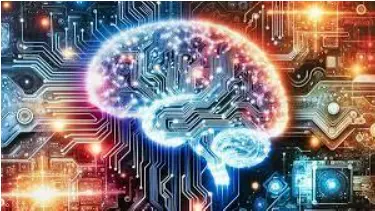
India AI Mission Overview
Introduction
- At the Global Partnership on Artificial Intelligence (GPAI) Summit 2023 in New Delhi, the Prime Minister of India announced the launch of the India AI Mission, a strategic initiative aimed at harnessing the potential of artificial intelligence for societal advancement.
Key Components of the India AI Mission
- IndiaAI Compute Capacity
- Objective: Establish a scalable AI computing ecosystem with over 10,000 graphics processing units (GPUs).
- Implementation: Public-private partnership model with 50% viability gap funding.
- IndiaAI Innovation Centre
- Purpose: Develop and deploy indigenous Large Multimodal Models (LMMs) and domain-specific foundational models in critical sectors.
- IndiaAI Datasets Platform
- Initiative: Streamline access to quality non-personal datasets for AI innovation.
- IndiaAI Application Development Initiative
- Goal: Promote AI applications in priority sectors such as healthcare, agriculture, and governance.
- IndiaAI FutureSkills
- Vision: Mitigate barriers to entry into AI programs, increase AI courses in academic programs at undergraduate, Masters, and Ph.D. levels.
- IndiaAI Startup Financing
- Concept: Support and accelerate deep-tech AI startups, providing streamlined access to funding for futuristic AI projects.
- Safe & Trusted AI
- Purpose: Implement responsible AI projects, including the development of indigenous tools and frameworks.
Significance of the India AI Mission
- Strategic Vision
- Aims to make AI in India and ensure that AI works for India.
- Showcases positive applications of AI for societal benefit on the global stage, enhancing India's global competitiveness.
- Comprehensive Ecosystem
- Establishes a robust ecosystem through strategic programs and partnerships across public and private sectors.
- Drives creativity, enhances internal capabilities, and safeguards India's technological autonomy.
- Employment Opportunities
- Generates employment opportunities that require advanced skills, tapping into the demographic advantage of the country.
Source: IE

Rising Copper Demand
In News: With an annual year-on-year growth of 16% in FY23, the escalating demand for copper has prompted policymakers and corporations to focus more keenly on the pivotal role of copper in driving economic expansion.
Key Aspects of Copper
- Overview
- Copper, renowned for its malleability, ductility, heat conductivity, and antimicrobial properties, stands as a versatile metal with diverse applications.
- Properties of Copper
- Malleability and Ductility
- Definition: The ability to be shaped into thin sheets or drawn into a thin wire without breaking.
- Characteristics: Copper exhibits remarkable malleability and ductility.
- Malleability and Ductility
- Applications of Copper
- Diverse Utilization
- Sectors: Extensively employed in construction, consumer durables, transportation, and industrial manufacturing.
- Clean Energy: Integral to clean energy technologies like solar panels, electric vehicles (EVs), and energy-efficient motors.
- Circular Economy: Recognized as a 100% recyclable metal, contributing to a circular economy.
- Diverse Utilization
- Occurrence and Composition
- Natural Presence
- Forms: Naturally found in various forms in the Earth's crust.
- Deposits: Occurs in sulphide, carbonate, silicate deposits, and as pure native copper.
- Composition: Most commercial copper ore deposits contain an average grade of 0.8%, with Indian copper ore averaging around 1%.
- Natural Presence
- Mining Methods
- Primary Approaches
- Dominance: Open-pit mining constitutes 80% of global copper mining operations.
- Primary Approaches
- Techniques: Involves open-pit and underground mining methods.
Copper Deposits in India
- Geographical Locations
- Main Regions: Singhbhum (Jharkhand), Balaghat (Madhya Pradesh), Jhunjhunu, and Alwar (Rajasthan).
- Minor Deposits: Agnigundala (Andhra Pradesh), Chitradurg, Hasan (Karnataka), and South Arcot (Tamil Nadu).
India's Copper Scenario
- Growing Demand
- Factors: Rising demand due to infrastructure projects, renewable energy initiatives, and urbanization.
- Import Reliance: Despite increasing demand, India heavily relies on copper imports due to limited domestic reserves.
Government Initiatives and Industry Response
- Promoting Investments
- Measures: Government promotes investments in smelters and refineries.
- Global Acquisition: Indian companies acquire copper mines abroad to ensure a stable supply and reduce dependence on international markets.
- Delegation to Zambia
- Proposal: The Ministry of Mines considers sending an industry delegation to copper-rich Zambia for potential exploration and mining projects.
- Critical Mineral Status
- Recognition: The government includes copper in its list of critical minerals, emphasizing the need to reduce import dependence.
Hindustan Copper Limited (HCL)
- Establishment
- Inception: Established in 1967 under the Companies Act.
- Enterprise: Operates as a Miniratna Category-I enterprise under the Ministry of Mines, Government of India.
- Vertical Integration
- Unique Position: HCL is India's sole vertically integrated copper-producing company.
Copper's Economic Significance
- Global Economic Indicator
- Indication: Copper prices reflect demand/supply dynamics, monetary markets, and speculation globally.
- Universal Integration: Unlike sector-specific commodities, copper holds significance across all economic sectors.
- Energy Efficiency Role
- Contribution: Copper plays a vital role in promoting energy efficiency in buildings.
- Applications: Its thermal and electrical conductivity make it ideal for wiring, heat exchangers, and roofing, leading to reduced energy consumption.
- Sustainability Impact: By minimizing energy losses, copper contributes to a more sustainable future.
|
UPSC Previous Year Questions Prelims (2010) Q. With reference to the mineral resources of India, consider the following pairs:
Which of the pairs given above is/are correctly matched? (a) 1 and 2 only Ans: (b) Mains (2021) Q. Despite India being one of the countries of Gondwanaland, its mining industry contributes much less to its Gross Domestic Product (GDP) in percentage. Discuss. |
Source: IE
Kerala Recognises Human-Wildlife Conflict as State Specific Disaster
In News: In the face of recurring fatalities caused by animal attacks and growing public discontent, Kerala has officially categorized man-animal conflict as a state-specific disaster, marking the first instance of such a declaration in the country.
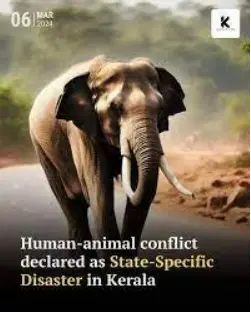
Understanding Human-Wildlife Conflict
Definition
- Man-animal conflict refers to the interaction between humans and wild animals, encompassing negative consequences for both parties, their resources, and the habitats involved.
Causes of Human-Wildlife Conflict
- Population Dynamics
- Challenge: Growing human or animal populations leading to territorial overlap and resource loss.
- Impact: Increased conflict instances in states like Maharashtra, marked by a significant rise in human deaths.
- Habitat Fragmentation
- Legal and Unlawful Changes: Resulting from activities like mining clearances and agricultural encroachment.
- Consequence: Loss of habitat and corridors contributing to heightened conflict situations.
- Changing Cropping Pattern
- Attraction: Wild animals drawn to agriculture due to evolving cropping patterns.
- Result: Encounters and conflicts between humans and wildlife in agricultural areas.
- Invasive Species and Habitat Destruction
- Issue: Spread of invasive alien species contributing to habitat destruction.
- Concern: Over 70% of elephant ranges and significant portions of lion and tiger ranges exist outside protected areas.
Current Scenario and Challenges in India
- Protected Areas Distribution
- Statistic: India boasts over 700 protected areas.
- Concern: A substantial percentage of critical wildlife ranges exist outside these protected areas.
- Legal Framework Critique
- Expert View: Ecologist Madhav Gadgil critiques the Wildlife Protection Act of 1972, suggesting it enables wildlife invasion into human habitations.
Potential Solutions
- Policy Enhancement
- Proposal: Better enforcement and pragmatic policies to reduce man-animal conflict instances.
- Objective: Minimize conflicts through strategic interventions and regulatory measures.
- Community Involvement
- Insight: Future for All Report 2021 recommends involving local communities for fostering coexistence.
- Rationale: Acknowledges the impossibility of entirely eliminating human-wildlife conflicts.
- Awareness Initiatives
- Strategy: Conducting awareness campaigns via various media platforms.
- Purpose: Educate the public about man-animal conflicts and promote responsible behavior.
- Skill Development
- Target: People living in and around forests.
- Benefit: Reduced pressure on both agricultural and forest land through skill development initiatives.
Case Study - Kerala's Success
- Population and Conflict Statistics
- Kerala's Scenario: With 19% of India's wild elephant population, Kerala accounts for only 4% of human deaths between 2018-2021.
- Contributing Factors: Unchanged boundaries between wilderness and civilization, coupled with changes in agricultural practices.
Kerala's Decision on Man-Animal Conflict
- State-Specific Disaster Declaration
- Shift in Responsibility: From the forest department to the state disaster management authority.
- Empowerment: Quicker and more decisive action under the Disaster Management Act.
- Need for the Decision
- Historical Challenges: Pressure to deal with conflicts through measures like tranquilization or capture.
- Authority Shift: Shift from the chief wildlife warden to the disaster management authority for more decisive actions.
- Legal Implications: The Disaster Management Act provides overriding powers during declared disasters, limiting legal challenges.
Source: IE
PM-JANMAN
In News: The implementation of the housing component within the Pradhan Mantri Janjati Adivasi Nyay Maha Abhiyaan (PM-JANMAN), which seeks to provide housing for Particularly Vulnerable Tribal Groups (PVTGs), encounters notable challenges impeding its seamless execution.
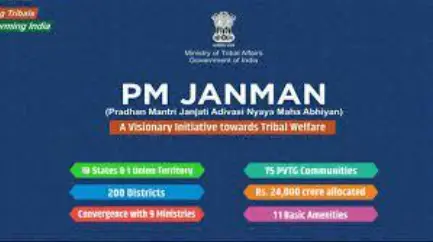
Challenges in Implementing PM-JANMAN
Data Discrepancies
- Discrepancies in Figures
- Issue: Discrepancies between Centre-provided data and state-identified figures create challenges in accurately identifying beneficiaries.
- Example: PM Gati Shakti portal estimates for the total population of 75 Particularly Vulnerable Tribal Groups (PVTGs) showed inconsistencies.
- Rushed Data Collection
- Concern: Limited timeframes for state surveys resulted in rushed and incomplete data collection processes.
- Impact: States like Kerala, Madhya Pradesh, and Tripura raised concerns about potential beneficiaries being overlooked.
- Incomplete Beneficiary Data
- Challenge: Data discrepancies lead to incomplete beneficiary lists.
- Example: Madhya Pradesh identified 50,000 additional eligible households outside Centre-notified villages.
Slow Progress
- Delayed Housing Component
- Issue: Simultaneous data collection and project implementation caused delays in PM-JANMAN's housing component.
- Outcome: Only 1.59 lakh out of the targeted 5 lakh houses have been sanctioned, missing the initial target significantly.
Election Year Pressure
- Urgency for Progress
- Concern: The scheme's rapid implementation ahead of General Elections 2024 may compromise thorough planning and execution.
- Potential Impact: The quality and inclusivity of housing distribution may be affected.
Geographical Challenges
- Logistical Issues
- Challenge: Identifying eligible beneficiaries in remote and inaccessible areas poses logistical challenges.
- Impediment: Lack of infrastructure and communication networks in tribal regions hampers data collection efforts.
Dynamic Population Dynamics
- Migratory Patterns
- Complexity: Tribal populations, especially PVTGs, exhibit migratory patterns for employment, complicating accurate beneficiary identification.
- Need for Adaptation: Strategies must adapt to dynamic population movements to ensure comprehensive coverage.
Overview of PM-JANMAN
- Launch and Focus
- Initiation: Launched on November 15, 2023, on Janjatiya Gaurav Diwas.
- Objective: Focuses on 11 interventions through 9 ministries to enhance socio-economic welfare for PVTGs.
- Total Outlay and Allocation
- Financial Scope: Rs 24,104 crore for a three-year period, with 80% dedicated to housing and roads.
- Housing Allocation: Rs 15,000 crore allocated under the Development Action Plan for the Scheduled Tribes (DAPST).
- Vision and Scope
- Vision: Improving socio-economic status by addressing health, education, and livelihood gaps.
- Scope: Comprehensive enhancement of living conditions for 75 PVTGs in 18 states and 1 UT.
- Foundational Features
- Inter-Ministerial Convergence: 9 Ministries collaborate under the Ministry of Tribal Affairs.
- Alignment of Schemes: Existing schemes modified to address tribal community needs.
- Coverage and Gaps Identification
- Target Population: Focus on 75 PVTGs in 18 states and 1 UT.
- Data Accuracy: Surveys identify gaps, updated on PM Gati-shakti Portal for cross-verification.
- Funding and Flexibility
- Source of Funds: DAPST grants allocated to Ministries for each intervention.
- Flexibility: DAPST mechanism allows dedicated funds for mission implementation.
- Reward Mechanism
- Performance Evaluation: District ranking based on performance indicators.
- Recognition: Top three districts and Ministries rewarded for outstanding performance.
Proposed Strategies for the Way Forward
- Standardized Data Collection
- Initiative: Implement a uniform data collection methodology to ensure consistency and accuracy.
- Rationale: Address discrepancies by establishing standardized processes for data gathering.
- Streamlined Processes
- Approach: Introduce streamlined processes to expedite both data collection and project execution.
- Balance: Prioritize efficiency without compromising the quality of information and implementation.
- Community Engagement
- Inclusion Strategy: Actively involve tribal communities in the planning and execution of the scheme.
- Benefits: Enhance inclusivity and effectiveness by incorporating local insights and needs.
- Investment in Infrastructure
- Focus Area: Allocate resources to improve infrastructure and communication networks in tribal regions.
- Purpose: Facilitate seamless data collection and ensure smoother implementation of the PM-JANMAN scheme.
- Adaptive Strategies
- Requirement: Develop adaptive strategies considering the dynamic population movements among tribal groups.
- Implementation: Tailor approaches to accommodate changes and ensure comprehensive coverage of eligible beneficiaries.
- Training and Capacity Building
- Program Implementation: Introduce training and capacity-building programs for stakeholders involved in data collection and scheme implementation.
- Goal: Enhance the efficiency and effectiveness of those contributing to the successful execution of PM-JANMAN
|
UPSC Previous Year Questions Prelims (2019) Q. Consider the following statements about Particularly Vulnerable Tribal Groups (PVTGs) in India:
Which of the statements given above are correct? (a) 1, 2 and 3 Ans: C Mains (2017) Q. What are the two major legal initiatives by the State since Independence addressing discrimination against Scheduled Tribes (STs)? Mains (2016) Q. Why are the tribals in India referred to as ‘the Scheduled Tribes’? Indicate the major provisions enshrined in the Constitution of India for their upliftment. |
Source: TH
Dolutegravir
In News: A recent report from the World Health Organization (WHO) underscores a growing trend of increased resistance to the antiretroviral drug dolutegravir (DTG) among patients living with HIV.
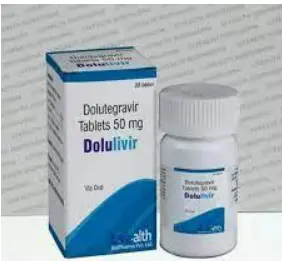
About Dolutegravir (DTG)
- Antiviral Drug for HIV Treatment
- Definition: Dolutegravir is an antiviral drug used in conjunction with other medications to treat HIV infection, preventing the progression to AIDS.
- Classified as HIV Integrase Inhibitor
- Medication Type: Belongs to the class of HIV integrase inhibitors.
- Mechanism: Works by reducing HIV levels and boosting immune cells to combat infections.
- Role in HIV Management
- Function: Decreases HIV in the blood, reducing the risk of AIDS and related illnesses.
- Limitation: While not a cure, it enhances the effectiveness of HIV treatment regimens.
- WHO Recommendation Since 2018
- Preferred Treatment: Dolutegravir recommended as the first- and second-line HIV treatment by the World Health Organization (WHO).
- Advantages: Noted for increased efficacy, ease of use, and fewer side effects compared to alternative drugs.
- Common Side Effects
- Headache, tiredness, and insomnia are common side effects.
- Regular Monitoring: Some users may experience severe skin rashes, allergic reactions, liver issues, or drug interactions.
What is HIV/AIDS?
- Chronic Condition Caused by HIV
- AIDS Definition: Chronic and potentially life-threatening condition resulting from Human Immunodeficiency Virus (HIV) infection.
- Immune System Impact: HIV targets and weakens the immune system, making the individual susceptible to infections and diseases.
- Transmission of HIV
- Sexually Transmitted: Primarily transmitted through sexual contact.
- Blood Contact: Spread via contact with infected blood, often associated with illicit injection drug use or needle sharing.
- Mother-to-Child Transmission: Possible during pregnancy, childbirth, or breastfeeding.
- Lack of Effective Cure
- Lifelong Infection: HIV, once contracted, remains in the body for life.
- Disease Control: Proper medical care, specifically Antiretroviral Therapy (ART), can effectively manage HIV, allowing individuals to lead healthy lives.
Source: DTE

Orans
In News: Communities, especially in western Rajasthan, express apprehension regarding the state's proposal to categorize orans (sacred groves) as deemed forests.

About Orans
- Definition and Location
- Orans are traditional sacred groves situated in Rajasthan.
- These groves are community forests meticulously preserved and managed by rural communities, guided by institutional frameworks and codes designating them as sacred.
- Cultural Significance
- Local Deities: Orans are often associated with local deities, contributing to their sacred status.
- Social Spaces: They serve as spaces for communal congregations, festivals, and various social events, intertwined with agrarian rhythms.
- Biodiversity and Features
- Rich in Biodiversity: Orans boast high biodiversity levels, housing various plant and animal species.
- Inclusion of Water Bodies: Typically, these sacred groves incorporate water bodies within their boundaries.
- Livelihood Practices
- Livestock Grazing: Orans serve as areas where herders bring their livestock for grazing.
- Cultural Linkage: The performance of social events in Orans is intricately connected to the agricultural calendar, highlighting community commitment to environmental conservation.
- Role in Conservation
- Historical Preservation: Communities in Rajasthan have been actively conserving Orans for centuries.
- Habitat for Endangered Species: Orans serve as the natural habitat for the Great Indian Bustard (GIB), a critically endangered bird protected under the Wildlife Protection Act and Rajasthan's State bird.
What are Sacred Groves?
- Definition and Protection
- Sacred Groves: Relic forest patches protected by communities as an expression of reverence for a deity.
- Conservation Significance: These groves play a crucial role in preserving forest biodiversity and providing a sanctuary for numerous plant and animal species.
- Geographical Distribution
- Widespread Presence: India hosts over 13,000 documented Sacred Groves.
- Regional Variations: States like Maharashtra, Karnataka, Kerala, and Tamil Nadu have their own versions, known as Kavu/Sarpa Kavu, Devarakadu/Devkad, Deorai/Devrai, and Jahera/Thakuramma, respectively.
Source: DTE
Article 131 of the Indian Constitution
In News: The Supreme Court recently criticized the Center's demand for the withdrawal of a suit filed by the Kerala Government as a prerequisite for granting consent to the state for additional borrowing, emphasizing that it is a state's right to approach the court under Article 131 of the Constitution.
Article 131 of the Indian Constitution: Understanding Exclusive Original Jurisdiction
- Jurisdiction Definition
- Article 131 grants the Supreme Court (SC) exclusive and original jurisdiction over legal matters arising between states or between states and the union.
- Original jurisdiction empowers the court to hear and adjudicate on a dispute in its initial stages.
- Bare Reading of Article 131
- The SC, to the exclusion of any other court, holds original jurisdiction in disputes:
- Between the Government of India and one or more States.
- Involving the Government of India and any State(s) against one or more other States.
- Between two or more States, particularly if the dispute hinges on a legal right's existence or extent.
- Nature and Limitations
- Article 131 operates within the framework of the Constitution, specifically addressing disputes related to legal rights.
- Political disputes are not covered unless legal rights are directly implicated.
- Court's Interpretation
- The SC clarified that 'State' in Article 131 excludes private citizens, companies, or government departments unless they are co-filing with State Governments.
- The article's applicability revolves around disputes that involve questions of law or fact impacting legal rights.
- Restrictions on Jurisdiction
- The SC's original jurisdiction does not extend to disputes arising from treaties, agreements, covenants, or similar instruments pre-dating the Constitution's commencement.
- Parliament can limit SC jurisdiction in disputes concerning the use, distribution, or control of inter-state river water.
- The SC's original jurisdiction does not cover suits initiated by private individuals against the government of India.
Source: TI
School Soil Health Programme
In News: The School Soil Health Programme in New Delhi was recently inaugurated by the Union Minister for Agriculture & Farmers’ Welfare and the Union Minister for Rural Development.
School Soil Health Programme Overview
The School Soil Health Programme, a collaborative effort between the Department of Agriculture and Farmers Welfare and the Department of School Education and Literacy, initiates a pilot project to enhance soil health awareness in schools.
Key Features
- Soil Labs Establishment: The project establishes 20 soil labs in rural Kendriya and Navodaya Vidyalayas, fostering practical learning environments.
- Study Modules and Training: Customized study modules are developed, and students and teachers receive training to enhance their understanding of soil health.
- Mobile Application and Portal: A dedicated mobile application is tailored for the school program, with a portal segment documenting all student activities, ensuring efficient tracking and management.
- Scaling Up: The successful pilot project is expanded to include 1000 schools, encompassing Kendriya Vidyalayas, Navodaya Vidyalayas, and Eklavya Model Schools.
- Onboarding Schools: Kendriya Vidyalayas, Navodaya Vidyalayas, and Eklavya Model Schools are integrated into the program through the portal, and online batches are created for streamlined participation.
- Soil Labs Setup: The Department of Agriculture and Farmers Welfare, in collaboration with the National Bank for Agriculture and Rural Development (NABARD), establishes soil labs in the participating schools.
- Student Involvement: School students actively engage in collecting soil samples, conducting tests in the school labs, and generating Soil Health Cards.
- Community Outreach: Armed with Soil Health Cards, students educate farmers about the recommended measures for improving soil health, contributing to sustainable agricultural practices.
Source: PIB
National Cooperative Database
In News: The Minister of Cooperation is set to inaugurate the National Cooperative Database (NCD) with the aim of promoting an economic model centered around cooperation.
About National Cooperative Database
- Initiative and Recognition
- Launched by the Ministry of Cooperation.
- Recognizes the crucial need for a comprehensive database for India's cooperative sector.
- Development and Collaboration
- Developed in collaboration with state governments, National Federations, and various stakeholders.
- A web-based digital dashboard serving as a centralized platform.
- Data Inclusion
- Captures data of cooperative societies, including National/State Federations.
- Data entry and validation conducted by nodal officials at RCS/DRCS offices for cooperative societies and provided by federations for federations.
- Scope and Reach
- Encompasses information from 8 lakh cooperatives with a collective membership exceeding 29 crores across diverse sectors nationwide.
- Data Parameters
- Captures information on various parameters like registered name, date, location, number of members, sectoral details, area of operation, economic activities, financial statements, and audit status.
- Communication and Connectivity
- Facilitates efficient communication between the Central Ministry, States/UTs, and Cooperative Societies.
- Provides comprehensive contact details for registered societies, fostering seamless communication between government entities and cooperative societies.
- Benefits of NCD
- Single-point access: Centralized platform for data access.
- Comprehensive and updated data: Ensures the accuracy and relevance of information.
- User-friendly interface: Enhances ease of use for stakeholders.
- Vertical and horizontal linkages: Promotes connectivity and collaboration.
- Query-based reports and graphs: Enables customized data retrieval.
- Management Information System (MIS) reports: Offers insights for decision-making.
- Data analytics: Utilizes data for informed decision-making.
- Geographical Mapping: Visual representation for better understanding and analysis.
- Stakeholder Benefits
- A crucial tool for effective communication among stakeholders in the cooperative sector.
- Enhances coordination and collaboration between government entities, States/UTs, and Cooperative Societies.
Source: India.com
Haiper
In News: Recently, individuals who were once part of Google's DeepMind team have unveiled Haiper, an advanced video generation tool powered by artificial intelligence.
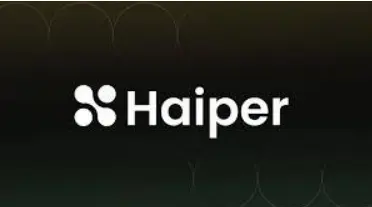
About Haiper
- User-Friendly Interface
- Designed for individuals with or without technical training.
- Facilitates the effortless generation of high-quality video content.
- Innovative Machine Learning
- Haiper integrates cutting-edge machine learning to make creativity "fun, surprising, and shareable."
- The founders emphasize a commitment to advancing the field with their perceptual foundation model.
- AGI-driven Approach
- Positioned as a potent perceptual foundation model-driven AI.
- Geared towards charting a new course towards Artificial General Intelligence (AGI), aligning with the pursuit of human-like intelligence and self-learning capabilities.
- Diverse Tools
- Offers a suite of tools including text-to-video, animated static images, and video repainting tools.
- Aims to empower users with versatile options for creative expression.
- Accessibility and Usage
- Users can access the platform through the website by logging in with their email addresses.
- Video generation can be initiated for free by inputting text prompts.
- Limitations on Video Duration
- Currently, users can generate HD videos spanning 2 seconds.
- A slightly lower-quality video option is available, extending the duration to four seconds.
Source: IE
Bengaluru's Water Scarcity: A Call to Action for India
In News: A recent article addresses the acute water scarcity in Bengaluru and evaluates the government's initiatives to mitigate the crisis.
Reasons Behind Bengaluru's Severe Water Scarcity
- Reduced Rainfall and Empty Reservoirs
- Impact: Insufficient rainfall affecting the Cauvery River, a primary water source.
- Data: Karnataka faced a 38% deficit in north-east Monsoon and 25% in southwest monsoon.
- Depletion of Groundwater Sources
- Consequence: Urban expansion reduces groundwater recharge, causing borewells to dry up.
- Impact: Falling rain and excessive extraction contribute to rapid groundwater decline.
- Inadequate Infrastructure
- Challenge: City infrastructure lags behind population growth, affecting water distribution.
- Solution: Anticipated completion of Cauvery project's Phase-5 by May 2024.
- Climate Change
- Influence: Changing weather patterns impact reservoir levels.
- Connection: Poor rainfall attributed to the El Niño phenomenon.
- Water Bodies Pollution
- Concern: Industrial and sewage pollution renders water sources unfit.
- Study: 85% of Bengaluru’s water bodies contaminated, according to EMPRI.
- Mismanagement and Inequitable Distribution
- Issue: Inefficient practices worsen water scarcity.
- Challenge: Legal disputes hinder effective water resource management.
Current State of the Groundwater Crisis in India
- Lack of Water Availability
- Challenge: India supports 17% of the world's population with only 4% of global freshwater.
- Report: NITI Aayog cites the worst water crisis, affecting 600 million people.
- Groundwater Overuse
- Fact: India is the largest global groundwater user.
- Dependency: Over 60% of irrigated agriculture relies on groundwater.
- Groundwater Contamination
- Issue: India ranks 120 among 122 countries in water quality.
- Concern: Groundwater contamination leads to health issues.
- Lack of Access to Safe Drinking Water
- Challenge: Millions lack access to safe water, leading to waterborne diseases.
- Statistics: 163 million lack safe drinking water, 210 million lack improved sanitation.
- Future Projections
- Projection: NITI Aayog anticipates water demand to double by 2030.
- Impact: Groundwater depletion rate to triple from 2041-2080 due to global warming.
Steps to Address the Water Crisis in India
- Interlinking of Rivers
- Strategy: Connect rivers for efficient water distribution.
- Aim: Transfer surplus water to deficient regions.
- Promote Water Conservation
- Initiative: Implement conservation at all levels.
- Methods: Rainwater harvesting, efficient irrigation, and minimizing wastage.
- Invest in Infrastructure
- Priority: Allocate funds for development and maintenance.
- Methods: Explore public-private partnerships and innovative financing.
- Promote Sustainable Agriculture
- Encouragement: Support water-efficient farming practices.
- Implementation: Incentivize technology adoption for water savings.
- Address Pollution
- Enforcement: Regulate industrial discharge and sewage treatment.
- Solutions: Implement wastewater treatment and eco-friendly practices.
- Legislation and Governance
- Strengthening: Enforce water-related legislation.
- Mechanisms: Establish water management authorities.
- Community Participation
- Empowerment: Strengthen community rights in groundwater governance.
- Success: Participatory Groundwater Management has shown positive results.
- Adopt One Water Approach
- Recognition: Acknowledge the value of all water sources.
- Strategy: Implement Integrated Water Resources Management for ecological and economic benefits.
Conclusion
Through inclusive participation, robust policies, and a commitment to long-term sustainability, India can navigate towards a future where safe and reliable groundwater is accessible to every citizen.
|
UPSC Previous Year Questions Prelims (2014) Q. What are the benefits of implementing the ‘Integrated Watershed Development Programme’?
Select the correct answer using the code given below: (a) 1 and 2 only Ans: C Mains (2019) Q. What is water stress? How and why does it differ regionally in India? |
Source: IT
Practice Questions - Current Affairs 09-03-2024
Q1. Consider the following statements regarding SWAYAM Plus Platform
Statement-I: Swayam was launched in 2017 by the Ministry of Education.
Statement-II: It Targets a diverse learner base nationwide, with a special focus on tier 1 and urban areas.
Select the correct answer using code given below:
- Both Statement-I and Statement-II are correct and Statement-II is the correct explanation for Statement-I
- Both Statement-I and Statement-II are correct and Statement-II is not the correct explanation for Statement-I
- Statement-I is correct but Statement-II is incorrect
- Statement-I is incorrect but Statement-II is correct
Q2.Consider the following statements regarding Blockchain Technology
- It is a public ledger that everyone can inspect, but which no single user controls
- The structure and design of blockchain is such that all the data in it are about cryptocurrency only
- 3. Applications that depend on basic features of blockchain can be developed without anybody’s permission
How many of the statements given above are correct?
- Only one
- Only two
- All three
- None
Q3.Consider the following statements regarding Ultra-High Net Worth Individuals (UHNWIs)
- UHNWIs are individuals with a net worth of USD 30 billion and above.
- USA leads in UHNWI growth with an impressive 9.7% yearly expansion.
Which of the statements given above is/are correct?
- 1 only
- 2 only
- Both 1 and 2
- Neither 1 nor 2
Q4. Consider the following statements
- The Reserve Bank of India manages and services Government of India Securities but not any State Government Securities
- Treasury bills are issued by the Government of India and there are no treasury bills issued by the State Governments
- Treasury bills offer are issued at a discount from the par value
How many of the statements given above are correct?
- Only one
- Only two
- All three
- None
Q5. With reference to National Commission for Backward Classes consider the following statements
- Comprises a Chairperson, Vice-Chairperson, and three other Members with the rank and pay of the Secretary to the Government of India.
- It is empowered with the authority of a civil court during complaint inquiries
Which of the statements given above is/are not correct?
- 1 only
- 2 only
- Both 1 and 2
- Neither 1 nor 2
Q6. Consider the following statements regarding National Electronic Fund Transfer
- NEFT is a centralized payment system owned and operated by the National Payment Corporation of india.
- It is accessible every day of the year.
Select the correct answer using code given below:
- Both Statement-I and Statement-II are correct and Statement-II is the correct explanation for Statement-I
- Both Statement-I and Statement-II are correct and Statement-II is not the correct explanation for Statement-I
- Statement-I is correct but Statement-II is incorrect
- Statement-I is incorrect but Statement-II is correct
Q7.Consider the following statements regarding Exercise Samudra Laksamana
- Exercise Samudra Laksamana is a collaborative naval exercise involving the Indian Navy and the Royal Malaysian Navy
- Indian Naval Ship KD Lekir and Royal Malaysian Ship Kiltan are actively engaged in the exercise
- INS Kiltan is an indigenously built anti-submarine warfare stealth corvette.
How many of the statements given above are correct?
- Only one
- Only two
- All three
- None
Q8.Consider the following statements regarding Bureau of Energy Efficiency
- Founded in 2002 under the provisions of the Electricity Act, 2001.
- Ministry of power is the nodal agency of BEE.
Which of the statements given above is/are correct?
- 1 only
- 2 only
- Both 1 and 2
- Neither 1 nor 2
Q9. Consider the following statements regarding The Genome India Project
- The Genome India Project is a nationwide initiative aimed at conducting whole-genome sequencing on representative populations in urban India.
- The project operates as a mission-mode, multi-institutional consortium, marking a groundbreaking endeavor in India
- It is aimed at establishing a reference haplotype structure specific to Indians, serving as a valuable resource for imputing missing genetic variations in future studies
How many of the statements given above are correct?
- Only one
- Only two
- All three
- None
Q10. With reference to Foreign Exchange Reserves consider the following statements
- Foreign Exchange Reserves consists of Gold, Silver, Dollars and Indian currency.
- A substantial reserve attracts foreign trade and fosters positive relations with trading nations.
Which of the statements given above is/are not correct?
- 1 only
- 2 only
- Both 1 and 2
- Neither 1 nor 2
Q11. Consider the following statements regarding Grey Zone Warfare
- Grey zone warfare refers to a vague, intermediate space existing between direct conflict and peace in the realm of international relations
- Activities in grey zone warfare involve bold and all-encompassing actions that unfold abruptly over time.
Select the correct answer using code given below:
- Both Statement-I and Statement-II are correct and Statement-II is the correct explanation for Statement-I
- Both Statement-I and Statement-II are correct and Statement-II is not the correct explanation for Statement-I
- Statement-I is correct but Statement-II is incorrect
- Statement-I is incorrect but Statement-II is correct
Q12.Consider the following statements regarding 2022 Update on Indian Leopard Population
- India's leopard population decreased by 8% from 2018 to 2022.
- Madhya Pradesh has the highest leopard population (3,907), followed by Maharashtra, Karnataka, and Tamil Nadu
- Leopard has been flagged as endangered by the IUCN.
How many of the statements given above are correct?
- Only one
- Only two
- All three
- None
Q13.Consider the following statements regarding Hemophilia A
- Hemophilia A is the most prevalent form, resulting from a deficiency in factor VIII, a crucial blood clotting protein.
- No treatment for this disorder is present currently.
Which of the statements given above is/are correct?
- 1 only
- 2 only
- Both 1 and 2
- Neither 1 nor 2
Q14. Consider the following statements regarding OPEC and OPEC+
- OPEC+ is a coalition of oil-exporting nations formed at the end of 2016.
- Consists of additional members such as Azerbaijan, Bahrain, Brunei, Kazakhstan, Russia, Mexico, Malaysia, South Sudan, Sudan, and Oman which are not in OPEC
- OPEC was established in Baghdad, Iraq, in September 1960, with the initial agreement signed by Iran, Iraq, Kuwait, Saudi Arabia, and Venezuela
How many of the statements given above are correct?
- Only one
- Only two
- All three
- None
Q15. With reference to Yars Missile consider the following statements
- Yars operates on a three-stage Liquid propellant mechanism, enhancing its efficiency and reliability.
- Yars’ operational range of 500 km is its only drawback.
Which of the statements given above is/are not correct?
- 1 only
- 2 only
- Both 1 and 2
- Neither 1 nor 2
Q16. Consider the following statements regarding Rare Diseases
- There is no formal definition for the rare diseases.
- Common symptoms can mask underlying rare diseases, contributing to misdiagnosis.
Select the correct answer using code given below:
- Both Statement-I and Statement-II are correct and Statement-II is the correct explanation for Statement-I
- Both Statement-I and Statement-II are correct and Statement-II is not the correct explanation for Statement-I
- Statement-I is correct but Statement-II is incorrect
- Statement-I is incorrect but Statement-II is correct
Q17. Consider the following statements regarding elections in Rajya Sabha
- Representatives to the Rajya Sabha are elected indirectly by the elected members of State Legislative Assemblies, as per Article 80 of the RPA act 1951.
- Members of state legislative assemblies participate in an indirect election system using the Single Transferable Vote (STV) method.
- The Tenth Schedule (anti-defection law) does not apply to Rajya Sabha elections.
How many of the statements given above are correct?
- Only one
- Only two
- All three
- None
Q18.Consider the following statements regarding Obelisks
- Obelisks represent a novel category of virus-like entities discovered within the human body and the global microbiome.
- The genetic sequences of obelisks, each around 1,000 nucleotides long, pose a unique challenge in terms of classification and identification.
Which of the statements given above is/are correct?
- 1 only
- 2 only
- Both 1 and 2
- Neither 1 nor 2
Q19. Consider the following statements regarding ADITI Scheme
- Acing Development of Innovative Technologies with iDEX (ADITI) focuses on fostering innovations in critical and strategic defence technologies.
- Start-ups are not eligible to receive a grant-in-aid under this scheme.
- ADITI aims to establish a 'Technology Watch Tool' to bridge the gap between the modern Armed Forces' expectations and requirements and the capabilities of the defence innovation ecosystem.
How many of the statements given above are correct?
- Only one
- Only two
- All three
- None
Q20. With reference to Risa Textile consider the following statements
- Risa Textile is a handwoven fabric utilized as a female upper garment and serves various purposes such as headgear, stole, or as a respectful gift in Manipur.
- This traditional Manipuri attire has a historical origin predating the rule of the Manikya kings, who governed Manipur for over 500 years starting from the 15th century
Which of the statements given above is/are not correct?
- 1 only
- 2 only
- Both 1 and 2
- Neither 1 nor 2
Share the article
Edukemy’s Current Affairs Quiz is published with multiple choice questions for UPSC exams
MCQ
Get Latest Updates on Offers, Event dates, and free Mentorship sessions.

Get in touch with our Expert Academic Counsellors 👋
Frequently Asked Questions
UPSC Daily Current Affairs focuses on learning current events on a daily basis. An aspirant needs to study regular and updated information about current events, news, and relevant topics that are important for UPSC aspirants. It covers national and international affairs, government policies, socio-economic issues, science and technology advancements, and more.
UPSC Daily Current Affairs provides aspirants with a concise and comprehensive overview of the latest happenings and developments across various fields. It helps aspirants stay updated with current affairs and provides them with valuable insights and analysis, which are essential for answering questions in the UPSC examinations. It enhances their knowledge, analytical skills, and ability to connect current affairs with the UPSC syllabus.
UPSC Daily Current Affairs covers a wide range of topics, including politics, economics, science and technology, environment, social issues, governance, international relations, and more. It offers news summaries, in-depth analyses, editorials, opinion pieces, and relevant study materials. It also provides practice questions and quizzes to help aspirants test their understanding of current affairs.
Edukemy's UPSC Daily Current Affairs can be accessed through:
- UPSC Daily Current Affairs can be accessed through Current Affairs tab at the top of the Main Page of Edukemy.
- Edukemy Mobile app: The Daily Current Affairs can also be access through Edukemy Mobile App.
- Social media: Follow Edukemy’s official social media accounts or pages that provide UPSC Daily Current Affairs updates, including Facebook, Twitter, or Telegram channels.


